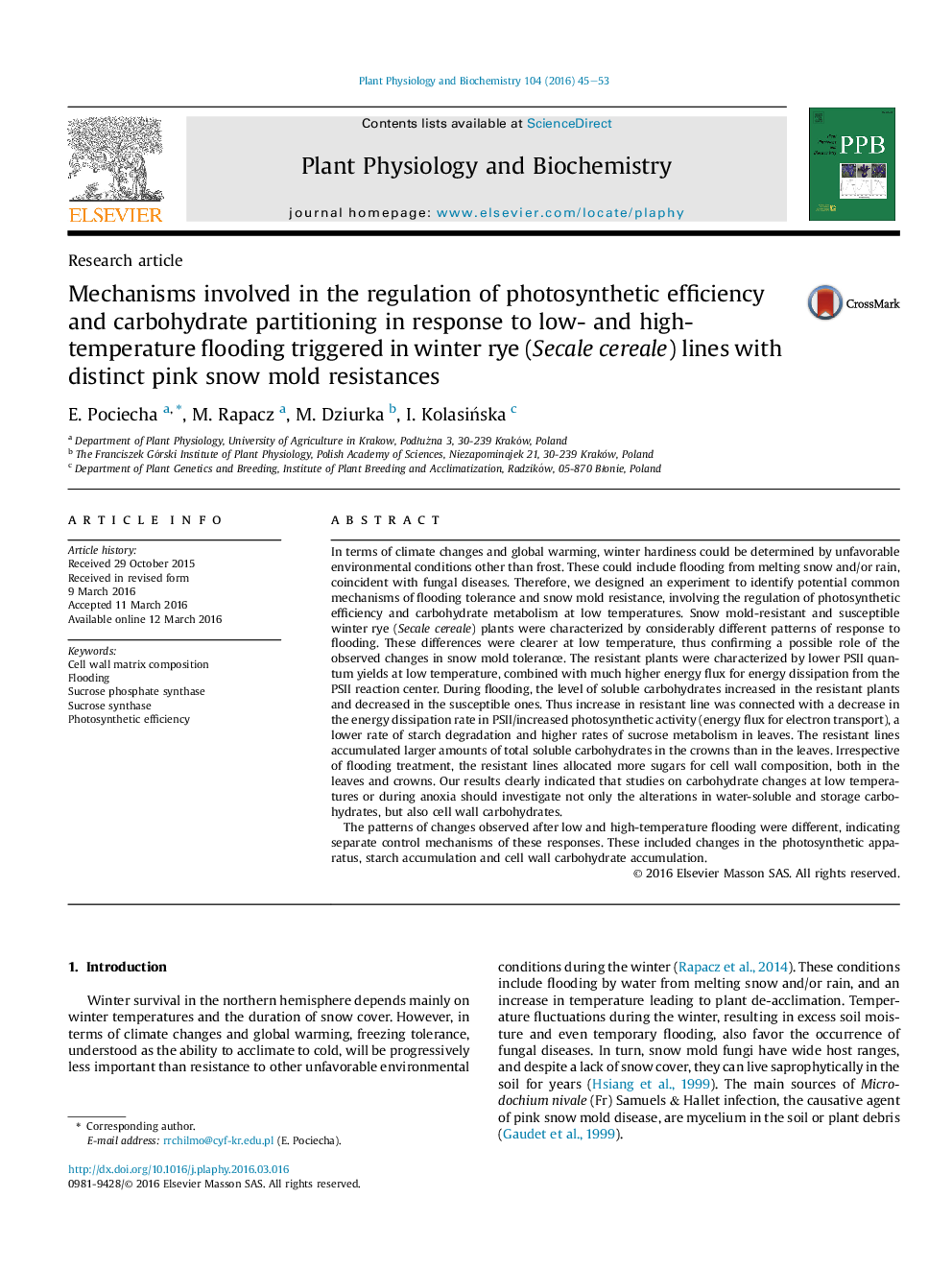| کد مقاله | کد نشریه | سال انتشار | مقاله انگلیسی | نسخه تمام متن |
|---|---|---|---|---|
| 2014750 | 1541917 | 2016 | 9 صفحه PDF | دانلود رایگان |

• We hypothesized cold flooding tolerance is related to snow mold resistance in winter rye.
• Cell wall polysaccharides synthesis/degradation is triggered in response to flooding.
• Resistant lines allocated more sugars for cell wall composition, both in the leaves and crowns.
• Higher rate of sucrose metabolism is related to flooding tolerance and pathogen resistance.
• Some mechanisms are common for cold flooding tolerance and snow mold resistance.
In terms of climate changes and global warming, winter hardiness could be determined by unfavorable environmental conditions other than frost. These could include flooding from melting snow and/or rain, coincident with fungal diseases. Therefore, we designed an experiment to identify potential common mechanisms of flooding tolerance and snow mold resistance, involving the regulation of photosynthetic efficiency and carbohydrate metabolism at low temperatures. Snow mold-resistant and susceptible winter rye (Secale cereale) plants were characterized by considerably different patterns of response to flooding. These differences were clearer at low temperature, thus confirming a possible role of the observed changes in snow mold tolerance. The resistant plants were characterized by lower PSII quantum yields at low temperature, combined with much higher energy flux for energy dissipation from the PSII reaction center. During flooding, the level of soluble carbohydrates increased in the resistant plants and decreased in the susceptible ones. Thus increase in resistant line was connected with a decrease in the energy dissipation rate in PSII/increased photosynthetic activity (energy flux for electron transport), a lower rate of starch degradation and higher rates of sucrose metabolism in leaves. The resistant lines accumulated larger amounts of total soluble carbohydrates in the crowns than in the leaves. Irrespective of flooding treatment, the resistant lines allocated more sugars for cell wall composition, both in the leaves and crowns. Our results clearly indicated that studies on carbohydrate changes at low temperatures or during anoxia should investigate not only the alterations in water-soluble and storage carbohydrates, but also cell wall carbohydrates.The patterns of changes observed after low and high-temperature flooding were different, indicating separate control mechanisms of these responses. These included changes in the photosynthetic apparatus, starch accumulation and cell wall carbohydrate accumulation.
Journal: Plant Physiology and Biochemistry - Volume 104, July 2016, Pages 45–53